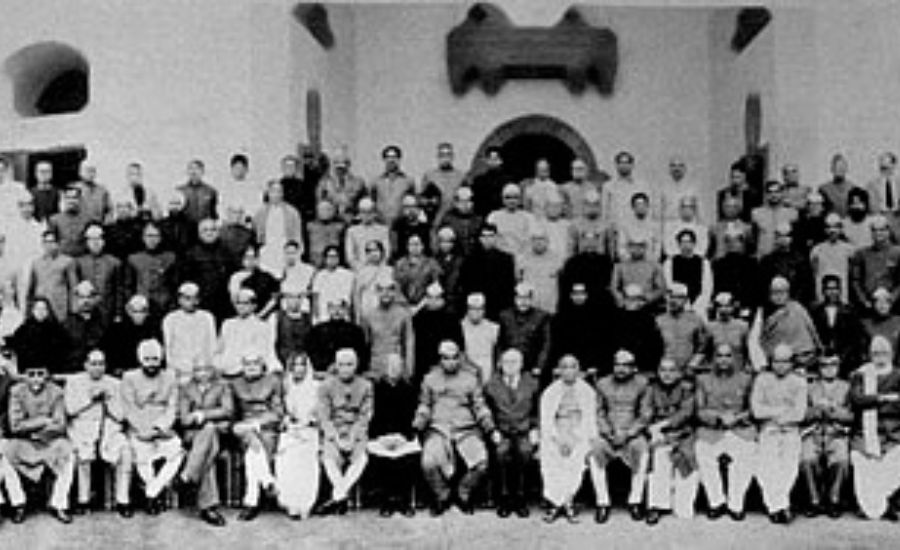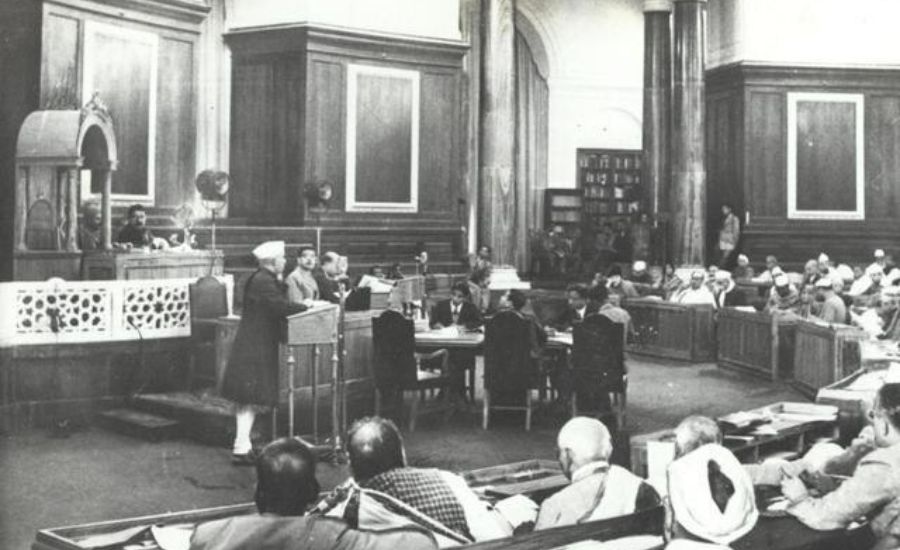
Exactly 72 years ago, on 26 November 1949, Sardar Patel had some good news to share with his colleagues in the Constituent Assembly:
‘I am glad to inform the House that all the nine States specified in Part B of the First Schedule of the Constitution, including the State of Hyderabad, have signified, in the manner indicated in my statement made on October 12th, their acceptance of the Constitution which the House is now going to adopt.‘
Part B of the First Schedule listed the former Princely States who had joined the Indian Union. These States now confirmed that they were ready to accept an Indian Constitution that the Assembly was about to adopt.
Over the past couple of sittings, the Assembly President Rajendra Prasad had been moderating Assembly discussions in which members, for the last time in the constitution-making process, had a chance to air their opinions, and concerns and reflect on the Constitution that they had drafted. Today, it was Prasad’s turn.
As Prasad was about to speak, he had to deal with some interruptions. B. Das wanted to know if there was going to be an announcement about ‘Vande Mataram’ as India’s national song and added: ‘…what would be our national anthem?’. Prasad responded that a decision would be taken in January. More interruptions followed – Algu Rai Shastri and R.V. Dhulekar wanted Assembly members to adopt and sign a Hindi-translated version of the Constitution.
Prasad reminded Shastri that the Assembly had decided that English would be the language of official use for the next 15 years and that he will work towards getting a Hindi translation ready by 26 January 1950. Responding to Dhulekhar, he said that the signing of a translated Hindi version of the Indian Constitution can only happen after the Constituent Assembly authenticated the translation – which wouldn’t be possible before 26 January 1950.
After seeing off these interruptions, Prasad finally began his speech. He laid out the challenges that the framers of the Constitution had to take into account:
‘…The countries of Europe have never been able to join together or coalesce even in a Confederacy, much less under one unitary Government. Here, in spite of the size of the population and the country, we have succeeded in framing a Constitution which covers the whole of it…’
He briefly recalled key moments in the constitution-making process including the Objectives Resolution and the setting up of various Assembly Committees. He also provided some interesting trivia: the expenses incurred in the constitution-making process as of 22 November 1949 was Rs. 63, 96, 729 and the number of visitors who watched the proceedings of the Constituent Assembly from the Gallery was 53,000.

Prasad was happy with most parts of the Constitution but regretted that the Constitution did not lay down any qualifications for a member of the legislature. Further, he would have liked the Constitution to be written in an ‘Indian‘ language.
He ended his remarks by thanking individuals part of the constitution-making process including the members of the Drafting Committee, Secretariat, and support staff.
Then, the moment had finally arrived:
‘President: It now remains to put the motion which was moved by Dr. Ambedkar, to the vote of the House. The question is:
“That the Constitution as settled by the Assembly be passed.”
The motion was adopted
(Prolonged Cheers)’
It was at this moment that we the people of India adopted our Constitution.
Watch – The Making of India’s Constitution | Get Your Preamble T-shirt | Register for Constitution Day Quiz!
